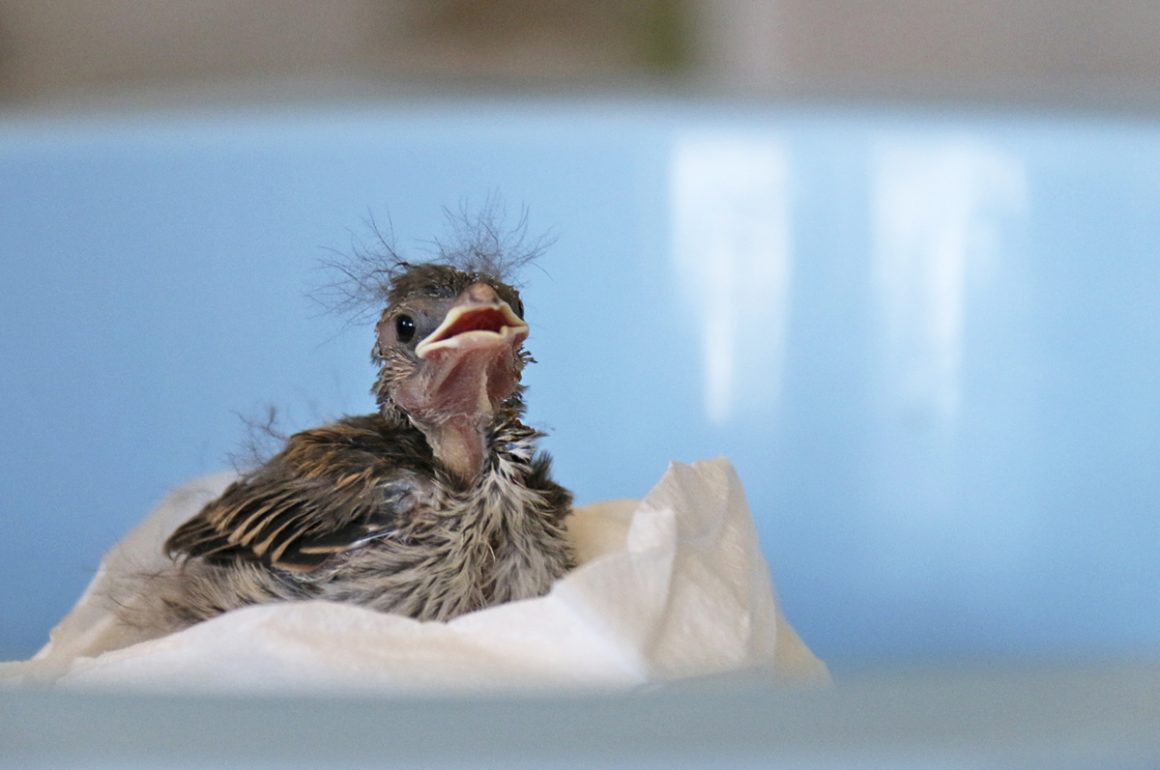
By Lisa Smith, NWRA (National Wildlife Rehabilitators Association)
Lisa is a lifelong birder and has over 20 years of experience in wildlife rehabilitation. One of her areas of interest is educating the public about how to live in our wild neighbors’ habitats with minimal detriment to the animals and how to keep wildlife safe and thriving on a planet with an ever-increasing human population.
Note 1: In many countries, native wild birds are protected under national law, and permits or licenses are required to care for these native wild birds. This is done for the birds’ protection, as they will receive better care and their best chance of returning to the wild from a professional wildlife rehabilitator. Professional wildlife rehabilitators have the knowledge and expertise to assess injuries, administer medical treatment as needed, and provide appropriate, species-specific diets that meet the high nutritional needs of young songbirds. It is also done to protect human caregivers, as some birds can present physical or biological (disease, parasites) risks to untrained handlers.
Note 2: With around 4,000 songbird species worldwide, it is impossible to write an article that addresses the specific development of each species. Below are generalizations. If you encounter a young songbird in the wild, it can be important to identify its species to be able to take appropriate action. Even if a wildlife rehabilitator is not near you, you can take a photo of the young bird and contact the closest wildlife rehabilitator to assist with identifying the species and whether a problem exists. Wildlife rehabilitators know what is normal for species they are familiar with and can advise on whether a young bird is acting normally for its age and species or whether it needs human intervention.
Spring and summer are nesting season for songbirds around the globe, and it’s common for humans to encounter baby songbirds during this season.
It’s also common for people to want to help a baby bird that appears helpless.
Before you act, the first thing to determine is whether you are looking at a young songbird that is not yet ready to leave the nest (a “nestling”) or an older baby songbird that is supposed to be out of the nest (“a fledgling”).
The vast majority of “abandoned” baby birds are perfectly healthy fledglings whose parents are nearby and watching them. The adult birds may or may not make their presence known. Some parent songbirds will aggressively swoop at a human (perceived predator)in an effort to make the human leave the baby bird alone. Others will scold loudly from nearby, again to try to draw the predator away from their young. These vocalizations may not be noticed by an inexperienced observer.
If a young songbird has feathers and can stand or fly a short distance, and it appears alert and active, it is most likely a healthy fledgling that should be left in its parents’ care. It is normal for many species of fledgling songbirds to be on the ground; they need time, several days to several weeks, to learn how to fly and find food. However, this is not true for all species (see Note 2 above). For some species, including those that nest in cavities or feed on insects in flight, being found on the ground is a sign of trouble. In these cases, a wildlife rehabilitator should be contacted to provide advice specific to the species and situation.
If the young bird is in a dangerous location, like near a road or active mowing equipment, it may be picked up and moved into a nearby bush or tree. The parents will find it and continue to care for it. It is not true that parents will reject a baby bird that has been handled by humans (extensive handling is stressful and should be avoided). They will return to feed their baby as it calls for food. If a young bird is in danger from an outdoor dog or cat, the dog or cat should be moved indoors, away from the bird.
If you want to ensure that the parent(s) return to feed the baby, watch the young bird from a safe distance, preferably indoors. Many wild birds will not return to feed their young if a perceived predator (you) is visible and/or in the immediate area.
If you encounter a younger songbird that does not have feathers on its body or cannot stand or hop, then it is too young to be out of the nest. Nestling songbirds fall out of their nests for a variety of reasons. If a single nestling has fallen out of its nest, it could be because of competition from its siblings or a developmental or health issue with the nestling. If the nestling is warm and active, it could be replaced in the nest; however, if the other nestlings are close to fledging, then you must be very careful that your actions do not cause the other nestlings to “fright fledge.” Nestlings will fledge prematurely if they sense imminent danger from a predator like a human.
A more common scenario is that an entire nest of songbirds is disturbed from storms or human activity. In this scenario, the nest—or an appropriate makeshift nest—can be secured in a tree or bush near the original nest site and monitored from a distance to see if the parent birds return (see above). This strategy works well when the nestlings are still warm and active. If they have become chilled, then the nestlings may not actively call to the parents for food. Similarly, in periods of intense heat, nestlings may overheat and become dehydrated due to exposure when out of the nest. These birds will likely require help from a wildlife rehabilitator.
There are a number of online resources describing how to successfully return nestlings to their parents’ care and what trouble signs to look for. It is generally not recommended to try to feed or provide water to nestling songbirds if you are not trained. The opening to the songbirds’ trachea is on the floor of their mouth, which makes it easy for them to inhale (aspirate) water or wet food. This can cause pneumonia.
Any young bird that has been in the mouth of a cat or a dog needs medical attention. Puncture wounds can be very small and difficult to see if the bird is feathered. The bacteria present in cat and dog mouths can cause a fatal systemic infection in birds of any age if the bird does not receive appropriate antibiotic therapy. In these cases, it is important to immediately contact a wildlife rehabilitator for assistance.
Like a lot of conservation efforts, education and prevention are the best ways to help baby songbirds. Wildlife rehabilitators spend much of their time advising members of the public on how best to protect wildlife or what to do with a wild animal that appears orphaned or injured. If a rehabilitator is not available when you call, they are likely busy helping animals in their care. Leave a message, they will call back!
Educate your friends, family, neighbors, and yourself about the nestling phase and fledging process. If you find a nest with baby songbirds in it, keep cats and dogs indoors or away from the site, especially around the time you think the birds will fledge. If you provide nestboxes for cavity-nesting songbirds, keep them clean and in good repair. Providing native shrubs and trees that help feed young songbirds or provide nesting habitat is another great way to support the songbirds in your area.
Resources
https://www.nwrawildlife.org/page/Found_Injured_Wildlife
https://theiwrc.org/resources/emergency
https://www.allaboutbirds.org/news/i-found-a-baby-bird-what-do-i-do/
https://www.paws.org/wildlife/found-a-wild-animal
https://wildlifecenter.org/help-advice/healthy-young-wildlife/if-you-find-baby-bird
https://spca.bc.ca/faqs/i-found-baby-bird/
https://www.rspca.org.uk/adviceandwelfare/wildlife/birds/baby
https://www.johannesburgwildlifevet.com/found-a-baby-bird.html
Cover Photo: Chipping Sparrow by Tri-State Bird Rescue & Research, Inc.


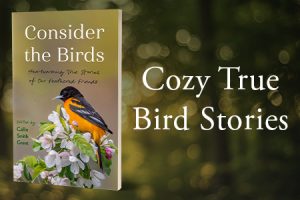

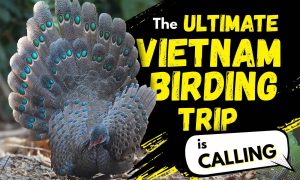
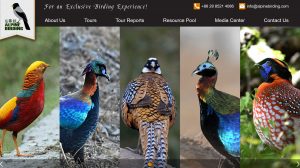
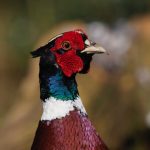
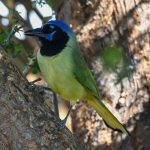
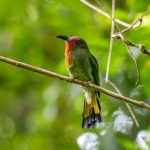

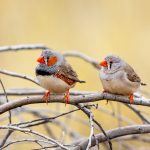
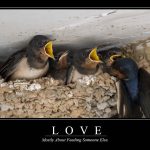

“It is normal for fledgling birds to be on the ground…” This is false and I’m disappointed to see our national professional organization continuing to promote this myth.
It is normal for fledglings of SOME species in North America to be on the ground unable to fly. However, for more than 50% of the 70+ passerine species we care for at Native Songbird Care & Conservation in California, it is absolutely NOT normal for healthy fledglings of those species to be on the ground. Fledglings of those species, such as swallows and flycatchers, are fully or mostly flighted when they fledge the nest. Advising the public to leave them on the ground or stuff them in a bush would most likely result in the death of that young bird.
It’s time our community of professionals change how we speak about and address the needs of songbirds. They are not all one species and should not be treated as such – in fact, they are the most diverse group of wildlife we have the privilege to care for as wildlife rehabilitation professionals. We owe it to them be more knowledgeable about their diversity and unique needs.
Yes, that is totally true not all Songbird fledgling’s fledge to the ground. Some fledge up to the tree tops. Some leave the nest and they are flighted, and some fledge to the ground. Does anybody know of a directory to help guide people on how the different types of birds fledge? As a Wildlife rehabilitator, it’s taking me years to find out some of this information.
There are so many wrong “facts” in this article. Of particular concern is that there is no mention at all of species variation. The author conflates basically all of North America’s songbird species, then tries to apply general rules as if they would apply equally to all species. The author also leaves out, or perhaps doesn’t know, the processes of feather development in baby songbirds. Notably, there are not just two stages of feathers, naked and feathered – there are several.
Baby birds start putting on feathers nearly immediately upon hatching. They start out naked but then grow “pin” feathers (developing feathers in shafts) that soon bust out into first-stage feathers. These immature feathers help keep babies warm and protected, but they are not mature enough for nest departure. So, having some feathers is not THE sole determining factor of whether a bird is a fledgling or not. Instead, one must determine which growth stage the feathers are in. For complete nest and nest area departure, immature feathers must grow into developed feathers that allow for full temperature regulation and partial to full flight.
“Fledgling” songbirds’ ability to fly at nest departure ranges from partial to full flight depending on the birds’ species. Open cup nesters tend to hurry out of the nest, and may move into the surrounding limbs around the nest. These birds stay in these areas until their feathers are more developed and they can evade predators better. Birds in cavities are more protected, so they remain in their cavity nests until full flight.
We do not see baby birds scattered all over our yards and parks because their survival strategies involve staying well hidden and not being exposed to predators. Some fledglings indeed hop about, and we might see them. However, these fledglings should be able to escape and be highly energetic. We should never be able to simply pick up a baby bird without resistance or feisty attempts at escape. Any bird incapable of any type of escape, is at risk of death.
Doves and other ground-nesting fledglings may get out of the nest and be more obvious. These birds do tend to head to the ground earlier. However, they are hopefully well-camouflaged and not easily found.
Being on the ground is a risky adventure for any fledgling songbird. This is why most species in North America do not have a developmental stage in which they hop around (much less sit) out in the open. Jays, robins, towhees, mockingbirds, etc are some of the few with that development style because they forage out in the open. However, even these will aim for shrubs and have a higher chance of survival if there are shrubs around.
It is also not true that all parent birds will care for their babies on the ground, regardless of age. Many species choose not to, finding that the risks to their own survival are too high to go to the ground to feed (swallows and swifts notably abandon their babies if they fail to fly at nest departure). But, it also may not be physically possible to care for babies in the nest and on the ground. If the fallen baby is not old enough to create its own heat, they that baby is most likely to die from hypothermia. Females often the parent that broods babies, she cannot be in two places.
Putting birds back in the nest. Well, first, and notably not mentioned in this article, one must know the species of the found baby. This is a difficult task for even many rehabilitators, much less the average person (or birder). If the nest has been predated and babies fall out, putting the babies back in may mean seconds for whoever got to the nest.
Regardless of all of these true facts, if a bird (baby or not) is found that seems out of place or in distress, we should be asking what happened. The first question should investigate what happened and why the bird is there, as well as explore the condition of the bird. Is she cold, starving, injured, lost, or has poor body condition? What is the species? What actual age (not just feathers or not). Is the bird’s behavior normal for the species, age of development? Etc etc.
The reality is that many songbirds don’t have high survival rates. Robins for example have a 75% chance of death once they leave the nest. It is frankly more likely that the hapless and out-of-place birds we find are part of these sad statistics of birds that don’t make it. Yet, because humans and human-related impacts are most often the cause of their situation, we have an ethical obligation to do the best we can for them.
In today’s world of urbanization and human habitat disturbance, more and more babies wind up on the ground unflighted. While we rehabilitators cannot possibly save them all, we can aim to provide the most responsible care possible. That starts with a thoughtful and caring evaluation of their predicament and condition, rather than dismissing them.
Best thing to do if you find a baby bird? Call a wildlife rescue that is experienced with songbirds. Insist on an adequate intake assessment.
Citations: Birds of the World by Cornell offers the developmental stages of many birds. But, if you are really curious, go beyond these short summaries and look up research on Google Scholar or other deep research AIs.
Hi Cheri,
We are not aware of any directory. For NA audiences, there is The Birder’s Handbook: A Field Guide to the Natural History of American Birds (1988) by Erlich, Dobkin and Wheye. It lists both incubation period and days to full flight. It is available from Simon and Schuster but also widely available second hand. The other resource is Baby Bird Identification: A North American Guide by Linda Tuttle Adams and available through the NWRA store (as well as Cornell). It lists days to fledge and full descriptions of nestling and fledgling feather growth and coloration, including photos and drawings by the author (Linda is both a biologist and a rehabilitator, and many photos were contributed by rehabilitators).
More detailed accounts of natural history can be found online for some geographic areas. Cornell’s All About Birds and Birds of the World are two helpful sites. World of Birds lists the incubation period and fledging days, if known for the species, under the breeding section. NWRA members have access to the World of Birds as a member benefit.
This article has been revised. We believe it covers many areas that individuals felt were incomplete. We did not anticipate the backlash we received, but we appreciate the opportunity to learn and do better when we are approached with kindness and respect. While we would always encourage someone who finds compromised wildlife to contact a professional wildlife rehabilitator, the audience for “10,000 Birds” is global and so not everyone would find that advice relevant. We look forward to sharing more science-based educational resources with our members and the general public.